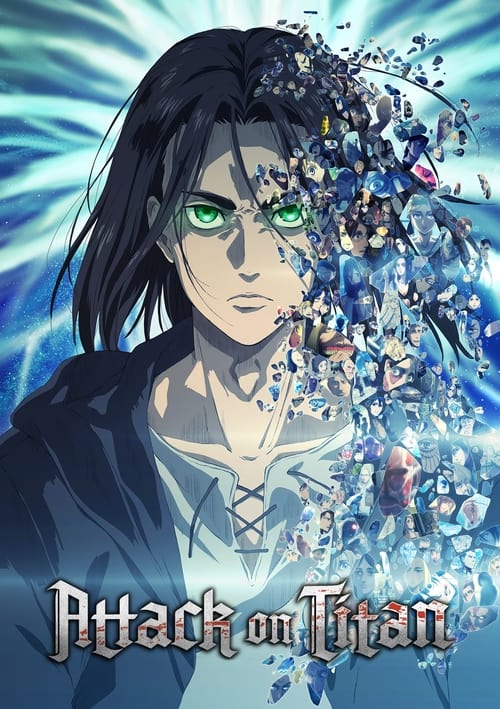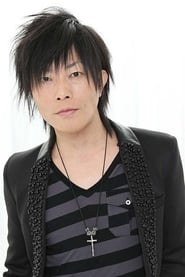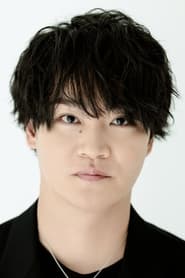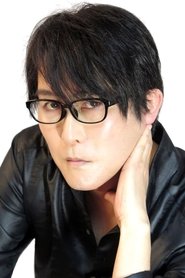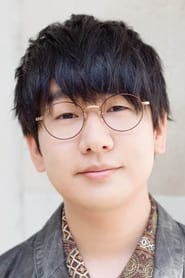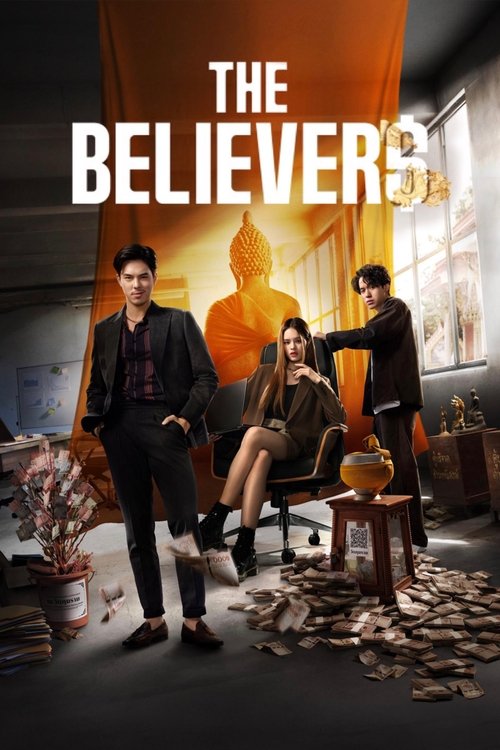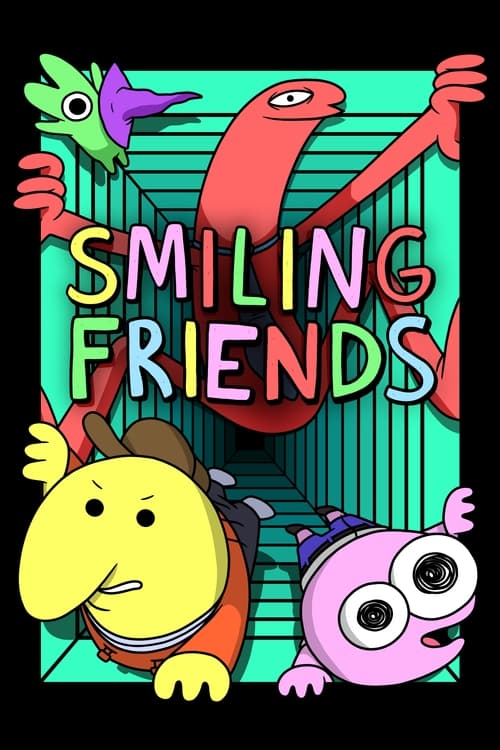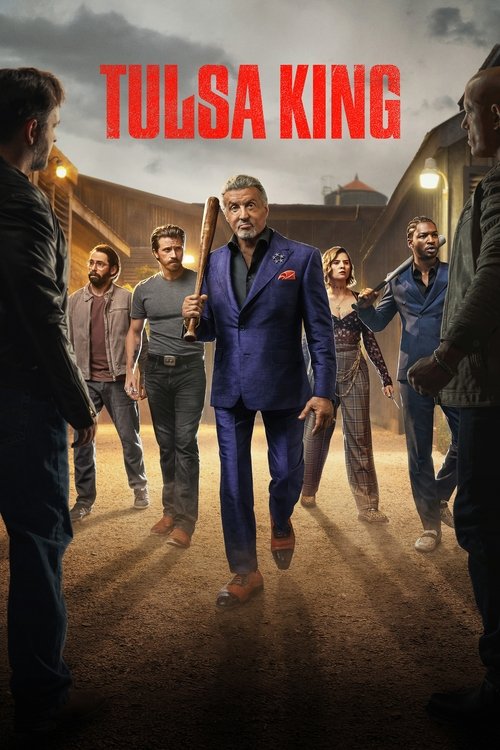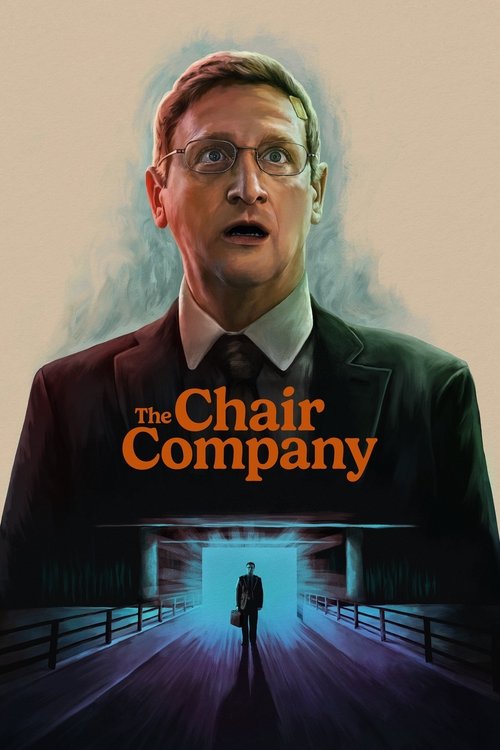
Ask Your Own Question
What is the plot?
In the year 845, humanity is on the brink of extinction due to the sudden appearance of gigantic humanoid creatures known as Titans. The story begins in the small town of Shiganshina, where Eren Yeager, a young boy, lives with his adoptive sister Mikasa Ackerman and their friend Armin Arlert. One day, the peace of their lives is shattered when the Colossal Titan breaches Wall Maria, allowing smaller Titans to invade the city. Eren witnesses the horror as Titans devour his mother, leading to a deep-seated desire for revenge against them.
After the attack, Eren, Mikasa, and Armin join the military to fight against the Titans. They undergo rigorous training at the military academy, where they learn to use the Vertical Maneuvering Equipment, which allows them to navigate through the air and combat Titans. Eren struggles with his own insecurities but is determined to become a soldier worthy of his mother's memory. During their training, they face various challenges, including rivalries with fellow trainees like Jean Kirstein and Reiner Braun.
Upon graduation, the trio is assigned to the Scout Regiment, where they embark on their first mission outside the walls. During this mission, they encounter the Female Titan, who proves to be a formidable opponent. Eren transforms into a Titan for the first time to protect his comrades, showcasing his unique ability to shift into a Titan at will. The Female Titan captures Eren, but Mikasa and the others manage to rescue him, leading to a fierce battle that reveals the Female Titan's intelligence and strategic thinking.
As the story progresses, the Scouts learn more about Eren's Titan-shifting ability and its potential implications. They discover that Eren is not the only one with this power, as they encounter other Titan shifters, including the Armored Titan and the Colossal Titan, who are later revealed to be Reiner and Bertolt, former comrades from the military. This revelation shakes the trust within the group, as they grapple with the betrayal of their friends.
The conflict escalates when the Titans launch a coordinated attack on Wall Rose, leading to chaos and destruction. Eren and his friends are forced to confront their fears and insecurities as they fight to protect humanity. During this time, Eren's determination grows, and he becomes more resolute in his quest to eradicate the Titans. He also learns about the existence of Marley, a nation beyond the walls that has been oppressing the Eldians, the people who can transform into Titans.
In a pivotal moment, Eren and the Scouts infiltrate Marley to gather intelligence and rescue their captured comrades. They engage in a fierce battle against the Marleyan military, showcasing their growth as soldiers. Eren's motivations shift as he grapples with the moral implications of their fight, leading to a confrontation with former allies and enemies alike.
The climax of the series occurs when Eren activates the Rumbling, a catastrophic event that unleashes countless Colossal Titans trapped within the walls to march across the world, intending to destroy all life outside of Paradis Island. This decision fractures the alliance between Eren and his former friends, as they struggle to understand his drastic actions. Mikasa, Armin, and the others are faced with the painful choice of stopping Eren, who has become a threat to humanity itself.
In the final confrontation, the remaining members of the Scout Regiment, now united with former enemies, engage in a desperate battle against Eren and his Titan form. The fight is intense and emotionally charged, as each character confronts their own beliefs and motivations. Mikasa and Armin, torn between their love for Eren and their duty to protect humanity, ultimately make the heartbreaking decision to stop him.
As the battle reaches its climax, Eren is defeated, and the Rumbling is halted. The world is left in ruins, and the surviving characters must grapple with the consequences of their actions. The series concludes with a somber reflection on the cycle of hatred and the possibility of a new beginning, leaving the fate of humanity uncertain as they face the aftermath of their choices.
What is the ending?
In the ending of Attack on Titan, Eren Yeager, having transformed into the Founding Titan, initiates the Rumbling to eradicate humanity outside of Paradis Island. His friends, including Mikasa, Armin, and others, struggle with their feelings towards him and the devastating consequences of his actions. Ultimately, they confront Eren, leading to a tragic battle where Mikasa kills him to stop the destruction. The series concludes with a somber reflection on freedom, the cycle of hatred, and the cost of their choices.
As the final episodes unfold, the atmosphere is thick with tension and despair. The world outside Paradis Island is on the brink of annihilation as Eren Yeager, now the Founding Titan, unleashes the Rumbling. Towering Colossal Titans march across the landscape, crushing everything in their path, a harrowing sight that symbolizes the overwhelming power Eren wields. The rumbling echoes like a death knell, a relentless march that signifies the end of humanity beyond the walls.
Scene breaks to the remaining members of the Survey Corps, who are grappling with the reality of Eren's transformation. Mikasa Ackerman, torn between her love for Eren and her duty to stop him, feels a profound sense of loss. Armin Arlert, now the Colossal Titan, wrestles with the moral implications of their mission. They gather with their allies, including Jean, Connie, and Levi, to discuss their next steps. The weight of their decisions hangs heavily in the air, as they realize they must confront their former friend to prevent further destruction.
As they approach Eren, the landscape is littered with the remnants of civilization, a stark reminder of the lives lost. The group is filled with conflicting emotions--anger, sorrow, and a desperate hope for redemption. They infiltrate Eren's location, where he stands amidst the chaos, a figure of both tragedy and power. The confrontation is charged with emotion; Mikasa's heart aches as she faces the boy she once loved, now a harbinger of doom.
In a climactic battle, the friends engage Eren, who is now a colossal titan, his form grotesque and powerful. The fight is brutal, showcasing the desperation of the characters as they struggle against their former ally. Armin, using his Colossal Titan form, creates a massive explosion to distract Eren, allowing Mikasa and the others to get closer. The stakes are high, and the emotional turmoil is palpable as they fight not just for their lives, but for the soul of their friend.
As the battle reaches its peak, Mikasa finds herself face to face with Eren. In a moment of heartbreaking clarity, she realizes that the boy she loved is gone, replaced by a being consumed by hatred and vengeance. With tears streaming down her face, she makes the ultimate sacrifice, plunging her blade into Eren's heart. The act is both a release and a tragedy, as Eren's final moments are filled with a mix of understanding and sorrow. He whispers to Mikasa, acknowledging their bond, before he succumbs to his fate.
With Eren's death, the Rumbling ceases, and the remaining Titans revert to their human forms. The world is left in ruins, but there is a glimmer of hope as the survivors begin to contemplate a future free from the cycle of hatred. The emotional weight of their choices hangs heavy in the air, as they reflect on the cost of freedom and the bonds they forged.
In the aftermath, the remaining characters face their new reality. Mikasa, heartbroken yet resolute, finds solace in the memories of Eren, vowing to honor his legacy while forging a new path. Armin, now a leader among the survivors, contemplates the future of humanity, determined to break the cycle of violence. Jean and Connie, grappling with their own grief, begin to rebuild their lives, seeking a way to coexist with the world outside.
The series concludes with a poignant scene of Mikasa visiting Eren's grave, a symbol of love and loss. As she sits beneath a tree, she reflects on the choices made and the sacrifices endured. The final moments encapsulate the themes of freedom, the burden of choice, and the enduring power of human connection, leaving viewers with a bittersweet sense of closure amidst the chaos.
Who dies?
In the TV show "Attack on Titan," numerous characters face tragic deaths throughout the series, each contributing to the overarching themes of sacrifice, survival, and the harsh realities of war. Below are some notable character deaths, described in detail:
- Eren's Mother - Carla Yeager
- When: Episode 1, "To You, in 2000 Years: The Fall of Shiganshina, Part 1"
- How: During the Titan invasion of Shiganshina, Carla is trapped in her home as the Colossal Titan breaches Wall Maria. Eren, Mikasa, and Armin witness the chaos as Titans flood the area. Eren's mother is ultimately devoured by a Titan while trying to save Eren and Mikasa.
-
Why: Her death serves as a catalyst for Eren's intense hatred towards Titans and his determination to fight back against them, shaping his motivations throughout the series.
-
Marco Bott
- When: Episode 3, "A Dim Light in the Darkness"
- How: Marco is killed during a mission to retake Wall Maria. He is left behind by his comrades after being ambushed by Titans. He is later found by Jean and others, having been partially devoured by a Titan.
-
Why: His death highlights the brutal reality of the war against Titans and the consequences of decisions made in the heat of battle, deeply affecting Jean and the other members of the Survey Corps.
-
Annie Leonhart
- When: Episode 25, "Wall: Assault on Stohess, Part 3"
- How: Annie is ultimately defeated by Eren in her Titan form during the battle in Stohess District. After a fierce confrontation, she is encased in crystal to prevent her from escaping.
-
Why: Annie's death (or rather, her entrapment) raises questions about the morality of the conflict and the nature of the Titans, as she is revealed to be a human infiltrator with her own motives.
-
Hange Zoë
- When: Episode 16, "Above and Below"
- How: Hange sacrifices herself during the battle against the Marleyan forces. In a desperate attempt to save her comrades, she confronts the enemy and is ultimately overwhelmed by Titans.
-
Why: Hange's death symbolizes the cost of leadership and the burden of responsibility, as she chooses to protect her friends over her own life, embodying the spirit of the Survey Corps.
-
Erwin Smith
- When: Episode 22, "The Other Side of the Sea"
- How: Erwin leads a charge against the Beast Titan, rallying his troops despite knowing the odds are against them. He is mortally wounded during the assault but inspires his men to fight on.
-
Why: Erwin's death is a poignant moment that underscores the themes of sacrifice and the heavy toll of war. His leadership and vision for humanity's future resonate deeply with the remaining characters.
-
Sasha Blouse
- When: Episode 16, "The War Hammer Titan"
- How: Sasha is shot by Gabi Braun during a raid on Marley. The moment is shocking and sudden, as she is struck down while trying to protect her comrades.
-
Why: Sasha's death serves as a heartbreaking reminder of the innocence lost in the conflict and the personal stakes involved, deeply affecting her friends and allies.
-
Zeke Yeager
- When: Episode 16, "Above and Below"
- How: Zeke's fate is complex, as he is involved in various battles and ultimately faces off against Eren. His death occurs later in the series, but his actions lead to significant consequences for both sides.
- Why: Zeke's motivations and ultimate fate reflect the intricate web of alliances and betrayals that define the series, showcasing the tragic nature of his character.
These deaths, among many others, contribute to the emotional weight of "Attack on Titan," illustrating the harsh realities of their world and the sacrifices made in the fight for freedom. Each character's demise serves to deepen the narrative and propel the remaining characters forward in their quest against the Titans.
Is there a post-credit scene?
In the 2013 anime "Attack on Titan," there is indeed a post-credit scene at the end of the first season. This scene occurs after the final episode, "Wall Rose," and serves as a teaser for the events to come.
As the credits roll, the scene opens with a panoramic view of a vast, desolate landscape, hinting at the world beyond the walls. The camera then shifts to a group of soldiers from the Survey Corps, who are on a mission outside the walls. Among them is a familiar figure, Captain Levi Ackerman, known for his stoic demeanor and exceptional combat skills. He stands with his trademark expression of calm determination, surveying the area with a keen eye.
The atmosphere is tense, filled with an underlying sense of urgency. The soldiers are on high alert, aware of the lurking dangers that the Titans pose. As they move cautiously through the terrain, the scene captures the weight of their mission and the fear that accompanies it. The sound of rustling leaves and distant echoes of Titan roars create an ominous backdrop, amplifying the tension.
Suddenly, the scene shifts to a close-up of a mysterious figure in the distance, partially obscured by shadows. This figure is revealed to be a Titan, but not just any Titan; it is the Armored Titan, a significant character whose identity and motivations are pivotal to the overarching narrative. The sight of the Armored Titan sends a wave of dread through the soldiers, and the scene ends with a sense of foreboding, leaving viewers with questions about the Titan's intentions and the fate of humanity.
This post-credit scene effectively sets the stage for the conflicts and revelations that will unfold in subsequent episodes, emphasizing the ever-present threat of the Titans and the relentless struggle of the characters to survive in a world filled with danger. It encapsulates the series' themes of fear, survival, and the unknown, leaving the audience eager for more.
What is the significance of the Titans' origin in Attack on Titan?
The origin of the Titans is a central mystery in Attack on Titan, revealed to be linked to the Eldians and their ability to transform into Titans due to the power of Ymir Fritz, the progenitor of all Titans. This revelation unfolds through the series, particularly in the later seasons, where it is shown that the Titans are former Eldians who have been transformed as a result of the curse placed on Ymir. This connection highlights themes of oppression, the cycle of hatred, and the consequences of power.
What drives Eren Yeager's transformation throughout the series?
Eren Yeager's transformation is driven by a complex mix of emotions, including a deep-seated desire for freedom, vengeance against the Titans for the destruction of his home and the death of his mother, and later, a sense of responsibility towards his friends and the Eldian people. As the series progresses, Eren's motivations shift from a naive wish to eradicate the Titans to a more morally ambiguous quest for liberation, culminating in his drastic actions in the final season.
How does the relationship between Eren Yeager and Mikasa Ackerman evolve?
Eren and Mikasa's relationship is marked by deep emotional ties, stemming from their childhood and Mikasa's protective instincts towards Eren. Initially, Mikasa's feelings are rooted in gratitude and loyalty, as she saved Eren from kidnappers. However, as the series progresses, Eren's increasingly reckless behavior and his quest for freedom create tension between them. Mikasa struggles with her feelings for Eren, torn between her love and her understanding of his dangerous path, leading to a poignant conflict in the final season.
What role does Armin Arlert play in the story's development?
Armin Arlert serves as the intellectual and strategic backbone of the group, often providing insights that lead to crucial victories against the Titans. His character evolves from a timid boy into a courageous leader, especially after inheriting the power of the Colossal Titan. Armin's motivations are driven by a desire to protect his friends and find a peaceful resolution to the conflict, showcasing his growth and the weight of responsibility he carries as the series progresses.
What is the significance of the basement reveal in Attack on Titan?
The basement reveal is a pivotal moment in Attack on Titan, as it uncovers the truth about the world outside the walls and the history of the Titans. When Eren, Mikasa, and Armin finally access Grisha Yeager's basement, they discover the truth about the Eldians, Marley, and the origins of the Titan powers. This revelation shifts the narrative from a simple battle for survival against the Titans to a complex exploration of history, identity, and the cycle of hatred, fundamentally altering the characters' understanding of their world and their place within it.
Is this family friendly?
"Attack on Titan," produced in 2013, is not considered family-friendly due to its intense and graphic content. Here are some potentially objectionable or upsetting aspects that may affect children or sensitive viewers:
-
Graphic Violence: The series features frequent and explicit scenes of violence, including the Titans devouring humans, which can be quite disturbing.
-
Death and Destruction: Many characters, including beloved ones, face brutal deaths, often depicted in a shocking manner that can evoke strong emotional reactions.
-
Themes of Fear and Despair: The overarching themes of survival against overwhelming odds create a pervasive atmosphere of dread and hopelessness.
-
Trauma and Psychological Strain: Characters experience significant trauma, leading to emotional breakdowns and mental health struggles, which may be distressing for viewers.
-
Gore and Blood: The show includes scenes with significant bloodshed and gore, particularly during battles with Titans.
-
Mature Themes: The narrative explores complex themes such as betrayal, sacrifice, and the moral ambiguity of war, which may be difficult for younger audiences to fully grasp.
-
Dark Atmosphere: The overall tone of the series is dark and oppressive, which can be unsettling for sensitive viewers.
These elements contribute to the show's mature rating and may not be suitable for children or those who are easily upset by intense content.

